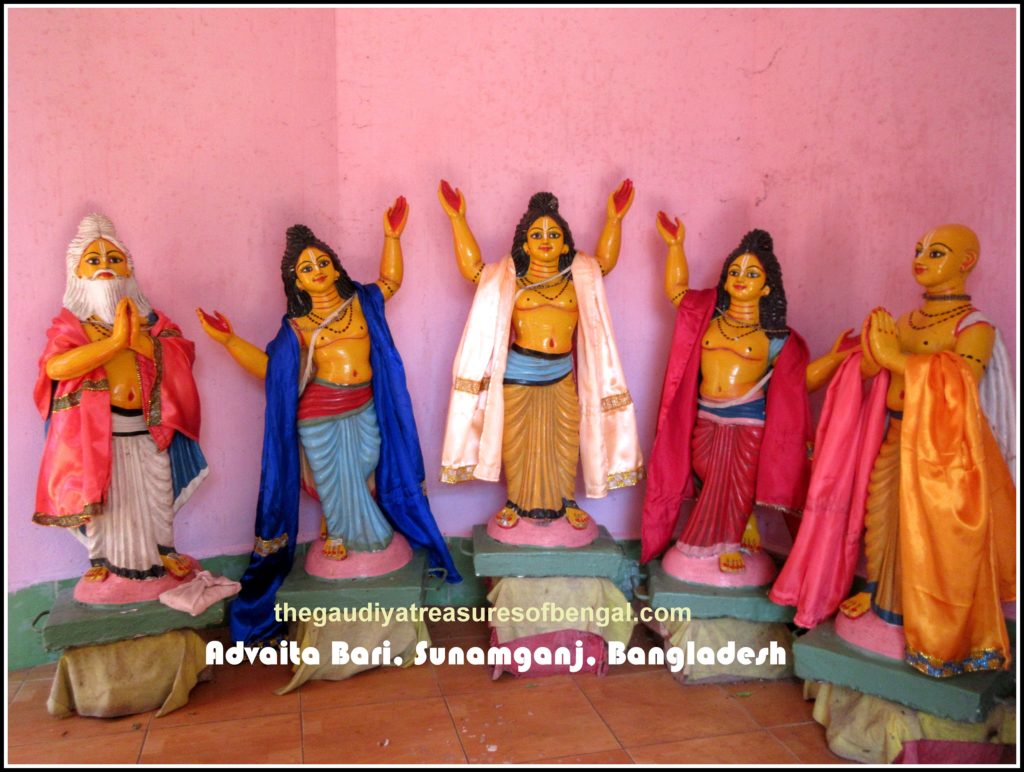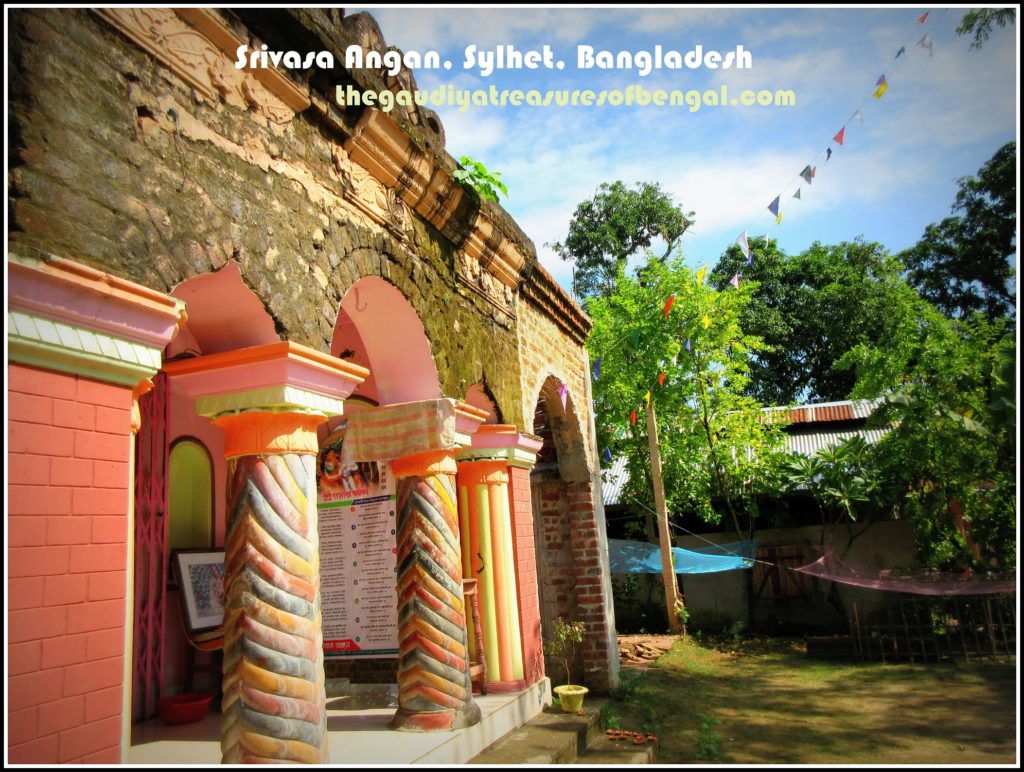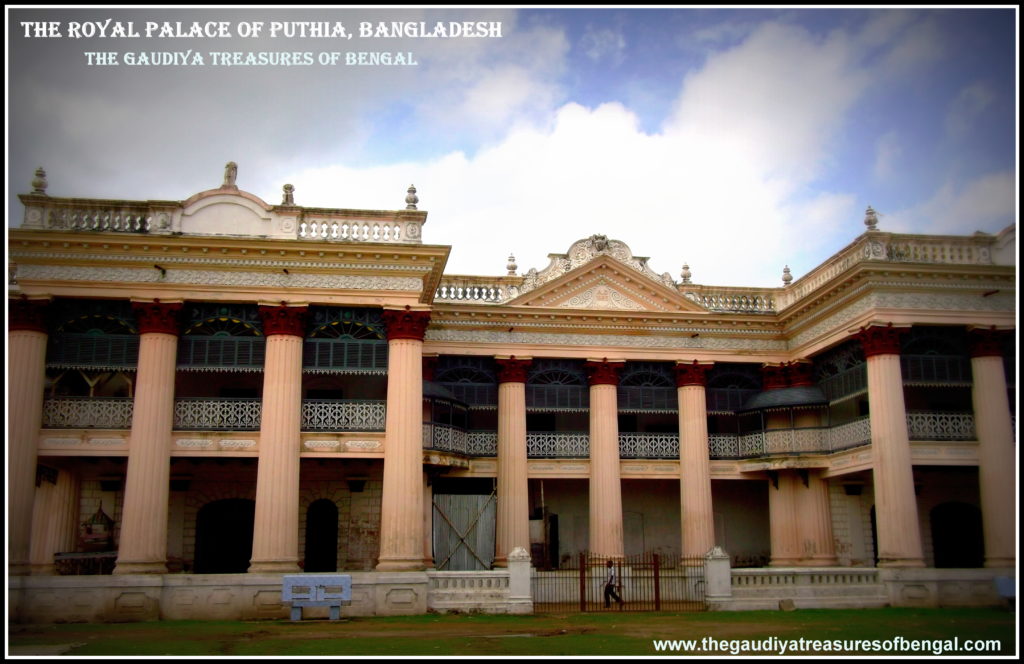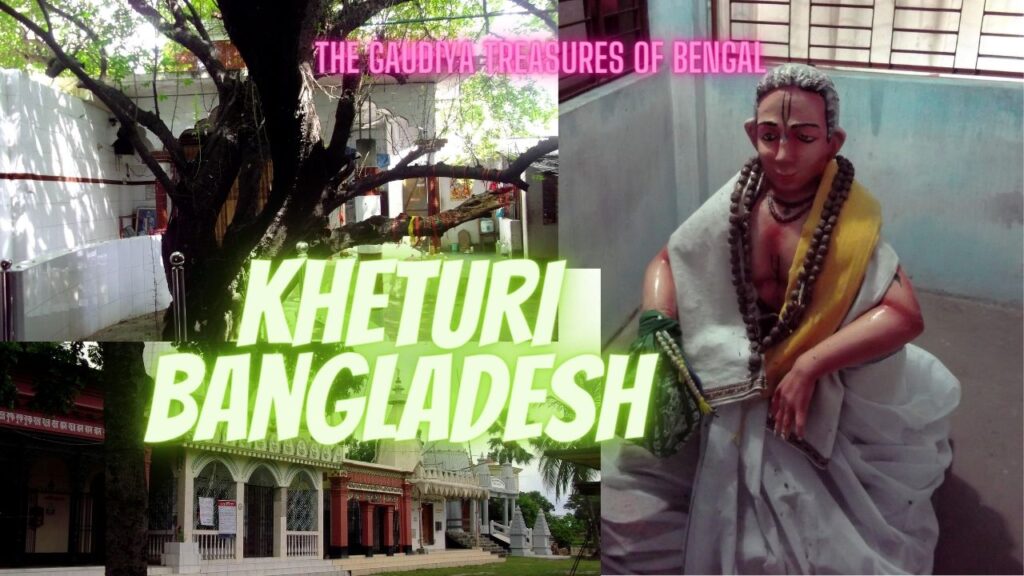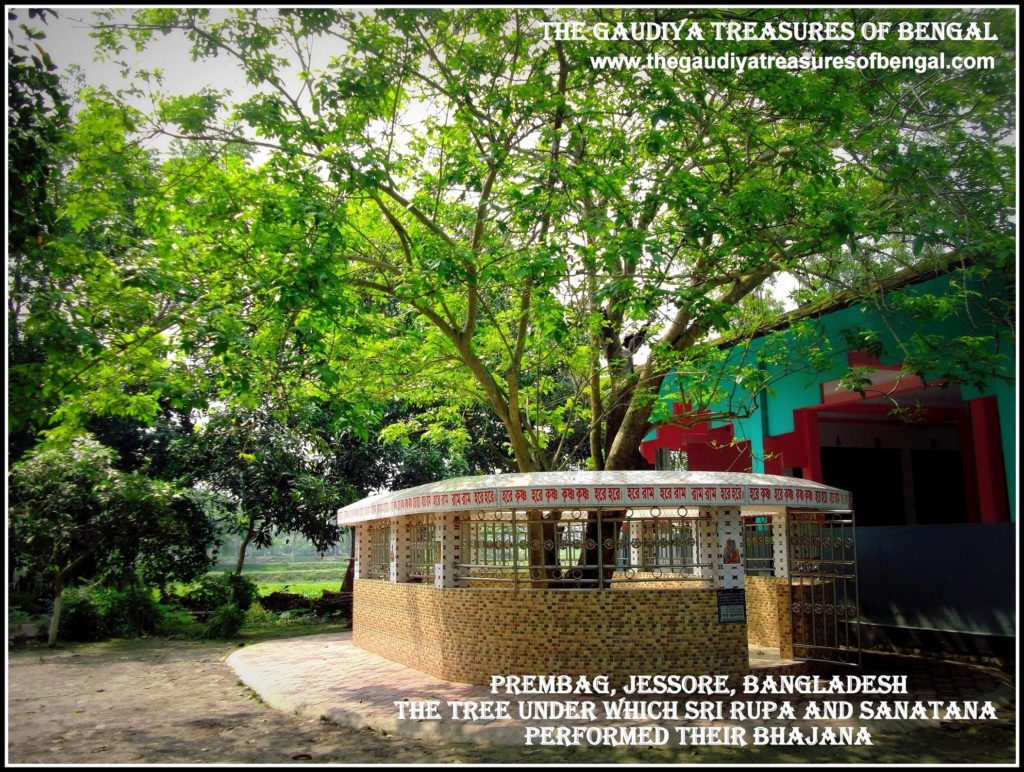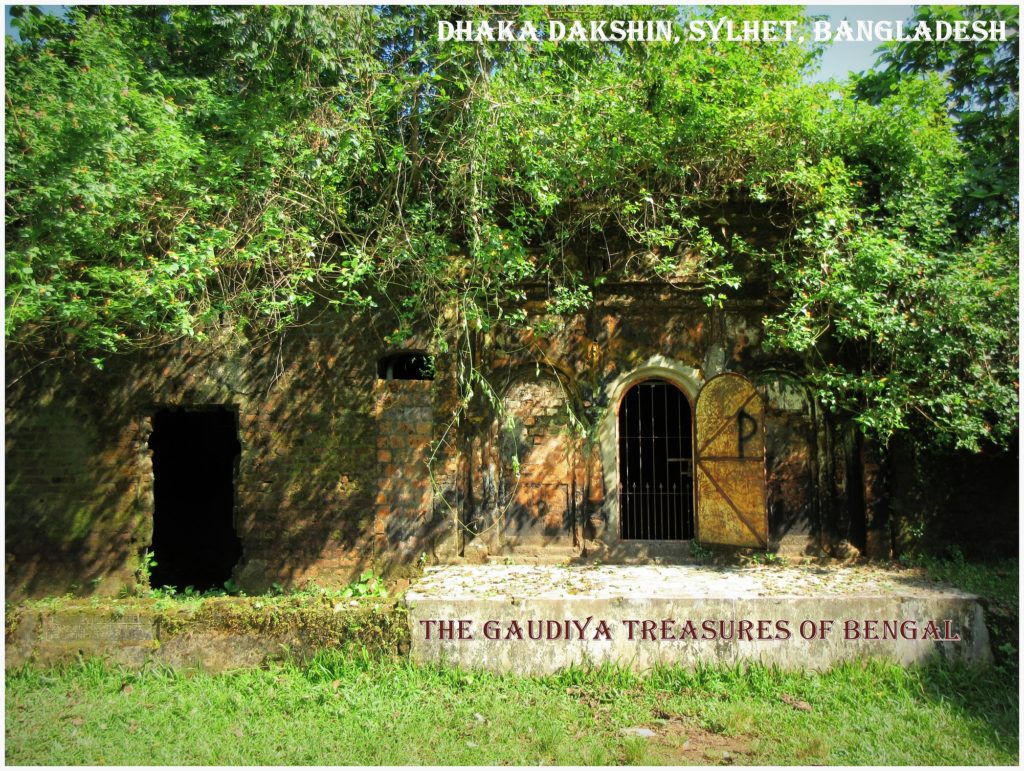
Jagannath Misra and his Family
Sri Jagannath Misra was born in ‘Dhaka Dakshin’, a small village situated in the northern Bangladesh district of Sylhet. His grandfather Sri Madhu Misra had four sons – Upendra, Kirtida,Rangada and Kirtivasa. Sri Jagannath Misra was the fifth son of Upendra Misra and Kalavati devi. Sri Upendra and Kalavati devi had six other sons – Kamsari, Paramananda, Padmanabha, Sarveshvara, Janardana and Trailokyanath. According to Gaura Gannodesha Dipika, Sri Upendra Misra was the incarnation of Parjanya, Krishna’s grandfather, while Sri Jagannath Misra was the combined incarnation of Nanda Maharaj, Vasudeva (the king of yadus) ,Dasaratha, and Kasyapa muni. After spending his childhood in Sylhet, Jagannath Misra moved to Navadvipa to gain higher education under the tutelage of Nilambara Chakravarty, a renowned scholar of the day (refer – ‘Sri Nilambar Chakravarti’s residence ,Belpukur,Navadvipa (Simantadvipa)’). He subsequently settled in Navadvipa after marrying Nilambara Chakravarty’s daughter, Saci devi. Gaura Gannodesha Dipika states that Saci devi ,Jagannath Misra’s wife, was the combined incarnation of the potencies of Devaki, Yashoda, Aditi and Kaushalya.Jagannath Misra and Saci mata, were the supremely fortunate parents of Sri Chaitanya Mahaprabhu, the deliverer of the three worlds. Sri Chaitanya deva appeared from the womb of mother Saci, on the full moon night of Phalguna (Feb-March) in the year 1486 AD (refer – ‘YogPeeth, Mayapur, Navadvipa – The birthplace of Sri Chaitanya Mahaprabhu’). The identity of Lord Chaitanya as the Supreme Personality of Godhead has been confirmed in several Vedic scriptures like Srimad Bhagavatam,Mahabharata, Garuda Purana,Nrsimha Purana, Padma purana,Bhavishya Purana, Narada Purana etc. We are quoting just two of such references below, for the pleasure of the devotees.

